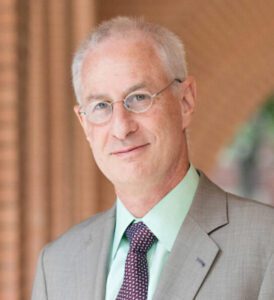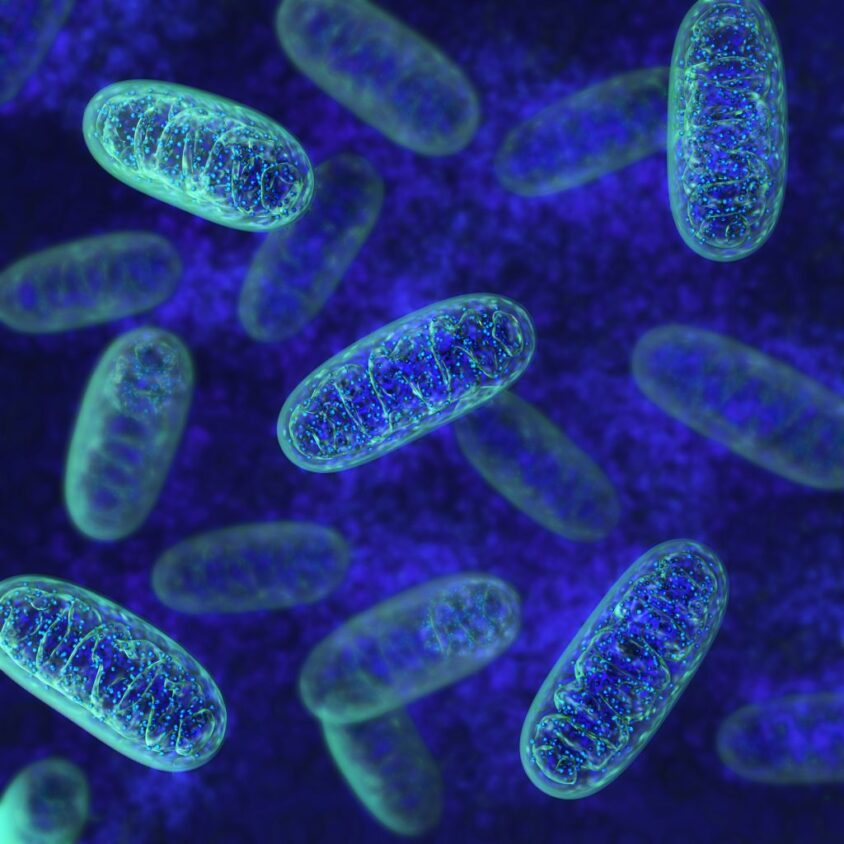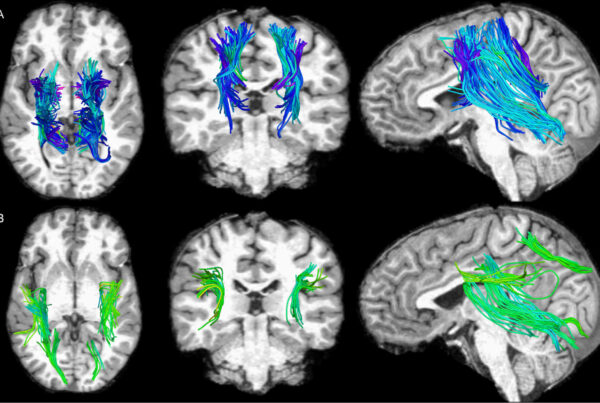A new study led by researchers at the USC Leonard Davis School of Gerontology is the first to demonstrate that a tiny protein has a big impact on health and longevity in both animals and humans.
The researchers examined humanin, a peptide encoded in the small genome of mitochondria — the powerhouses of the cell – rather than the main genome in a cell’s nucleus. From experiments in laboratory animals to measurements in human patients, the multi-site collaboration demonstrates how higher levels of humanin in the body are connected to longer lifespans and better health. It is linked to a lower risk for diseases such as Alzheimer’s.
“Humanin has long been known to help prevent many age-related diseases, and this is the first time that it has been shown that it can also increase lifespan,” said senior author Pinchas Cohen, professor of gerontology, medicine and biological sciences and dean of the USC Leonard Davis School.
An intriguing evolutionary history
Humanin has been found not only in human mitochondria but also throughout the animal kingdom, a sign that its related gene has been maintained, or conserved, throughout evolution. The study, which was published online in the journal Aging on June 23, examined humanin in several animal species, including worms and mice, as well as humans, including Alzheimer’s patients and children of centenarians.
The results highlight the potential for humanin and other mitochondrial proteins to become treatments for age-related ailments. They also indicate that humanin may be an ancient mitochondrial signaling mechanism that is key for regulating the body’s health and lifespan, said first author and USC Leonard Davis Research Assistant Professor Kelvin Yen.
More humanin, longer lifespans
Humanin levels have previously been observed to decrease with age in many species. In this new study, the scientists observed higher levels of humanin in organisms predisposed to long lives, including the famously age-resistant naked mole rat, which experiences only a very slow decline in levels of humanin circulating in the body throughout its 30-year lifespan.
In contrast, mice experience a 40% drop in humanin over the first 18 months of life, and primates such as rhesus macaques appeared to have a similarly dramatic drop in humanin between the ages of 19 and 25.
In humans, researchers observed this phenomenon of higher and more sustained levels of humanin in 18 children of centenarians, versus a control group of 19 children of non-centenarians. Individuals whose parents reach 100 years old are statistically more likely than other people to reach very old age.
In C. elegans, a species of small worm, modifying their genes to produce higher amounts of humanin within their bodies was enough to significantly increase lifespans, as long as the worms had a non-mutated version of a gene called daf-16/FOXO. But these longer-lived worms exhibited a smaller body size, less body fat, and a smaller average number of eggs laid during reproduction.
These results were echoed in similarly transgenic mice; the mice who were made to express more humanin were smaller and had fewer offspring. Scientists have observed a similar pattern in long-lived humans.
“This tradeoff between longevity and reproduction is thought to be due to an evolutionarily conserved balance between using energy to produce more offspring or using the energy to maintain the organism for future reproductive efforts,” Yen said. “Evolutionarily speaking, the goal of life is to reproduce and then you’re done, but if you can’t reproduce, you should try to hang around as long as possible, and a side effect of that is longevity.”
Indication of – and protection against – disease
Higher humanin aren’t just linked to increased lifespan; lower levels may increase the risk of disease and lower resistance to toxic exposures.
The researchers analyzed samples of cerebral spinal fluid from a small number of Alzheimer’s patients and control individuals without dementia and noticed that humanin levels were much lower in the Alzheimer’s patients. And in newborn cord blood samples, high levels of humanin correlated with a high mitochondrial DNA (mtDNA) copy number, or the number of copies of the mitochondrial genome present within each cell.
“Humanin levels are inversely correlated with a decrease in mitochondrial DNA (mtDNA) copy number, which in itself has been associated with a number of different diseases such as cancer, kidney disease, and cardiovascular disease,” Yen said.
The team also studied human cell lines that featured a mutation called 3243 MELAS (mitochondrial myopathy, encephalopathy, lactic acidosis, and stroke-like episodes syndrome), of which one hallmark is mutated mitochondria. The higher the percentage of mutated mitochondria, the lower the amount of humanin, Yen said, which suggests that low humanin could be a marker of mitochondrial dysfunction in general.
Increases in humanin may protect against disease and toxin exposure. Treatment with humanin protected yeast cells against otherwise lethal doses of heat shock. Mice were better able to tolerate exposure to cyclophosphamide – a chemotherapy drug with several side effects – when they had higher humanin levels, whether they received humanin treatment via injections or produced more within their bodies via genetic modification. And while it didn’t induce a longer lifespan compared to the control group, treating middle-aged mice with a potent humanin analogue, or HNG, was also associated with other positive results, including better metabolic health, decreases in visceral fat, and increased lean body mass.
Potential for treatments
Cohen’s laboratory was one of three groups that independently discovered humanin and has continued to unlock the secrets of the mitochondrial genome. Other promising mitochondrial peptides characterized by Cohen’s team include MOTS-c, which plays a role in communication between the mitochondria and the nucleus in cells and appears to mimic the effects of exercise, and small humanin-like peptides (SHLPs) 1-6, which appear to have a variety of functions within the body.
This new wide-ranging study highlights the importance of humanin as a potentially powerful regulator of lifespan and health, and harnessing it for treatments could address a variety of age-related illnesses, Cohen said.
“This study, as well as many others, suggest that humanin administration would be an effective therapeutic treatment for a large number of diseases and further solidifies the importance of the mitochondria beyond its traditional role as the ‘powerhouse of the cell,’” he said.
—
Yen and Cohen’s USC coauthors included Hemal H. Mehta, Su‐Jeong Kim, Noel Guerrero, Jenna Port, Qiuli Bi, Gerardo Navarrete, Sebastian Brandhorst, Junxiang Wan, and Valter Longo of the USC Leonard Davis School and Carrie V. Breton of the Keck School of Medicine of USC. Other coauthors were YanHe Lue, James Hoang, Ronald Swerdloff, and Christina Wang of the Lundquist Institute at Harbor‐UCLA Medical Center; Kaitlyn Noel Lewis and Rochelle Buffenstein of the Barshop Institute, University of Texas Health at San Antonio; Julie A. Mattison of the National Institute on Aging; Gil Atzmon and Nir Barzilai of the Albert Einstein College of Medicine, and Douglas Wallace of the Mitochondrial and Epigenomic Medicine, Children’s Hospital of Philadelphia. Cohen and Barzilai are consultants and stockholders of Cohbar Inc.
Funding sources for the study included the National Institutes of Health, including grants P01AG021654 (Barzilai), 1R01AG042188 (Atzmon), 1R01AG 034430 (Cohen), 1P01AG034906 (Cohen), and R21 ES025870 (Breton). Funding sources also included the Nathan Shock Center of Excellence for the Biology of Aging (P30AG038072, Barzilai), National Institute on Aging Intramural Research Program (P40 OD010440, Mattison), and the Glenn Center for the Biology of Human Aging (Paul Glenn Foundation Grant to Barzilai and Cohen).

Research Assistant Professor Kelvin Yen

Dean Pinchas Cohen





